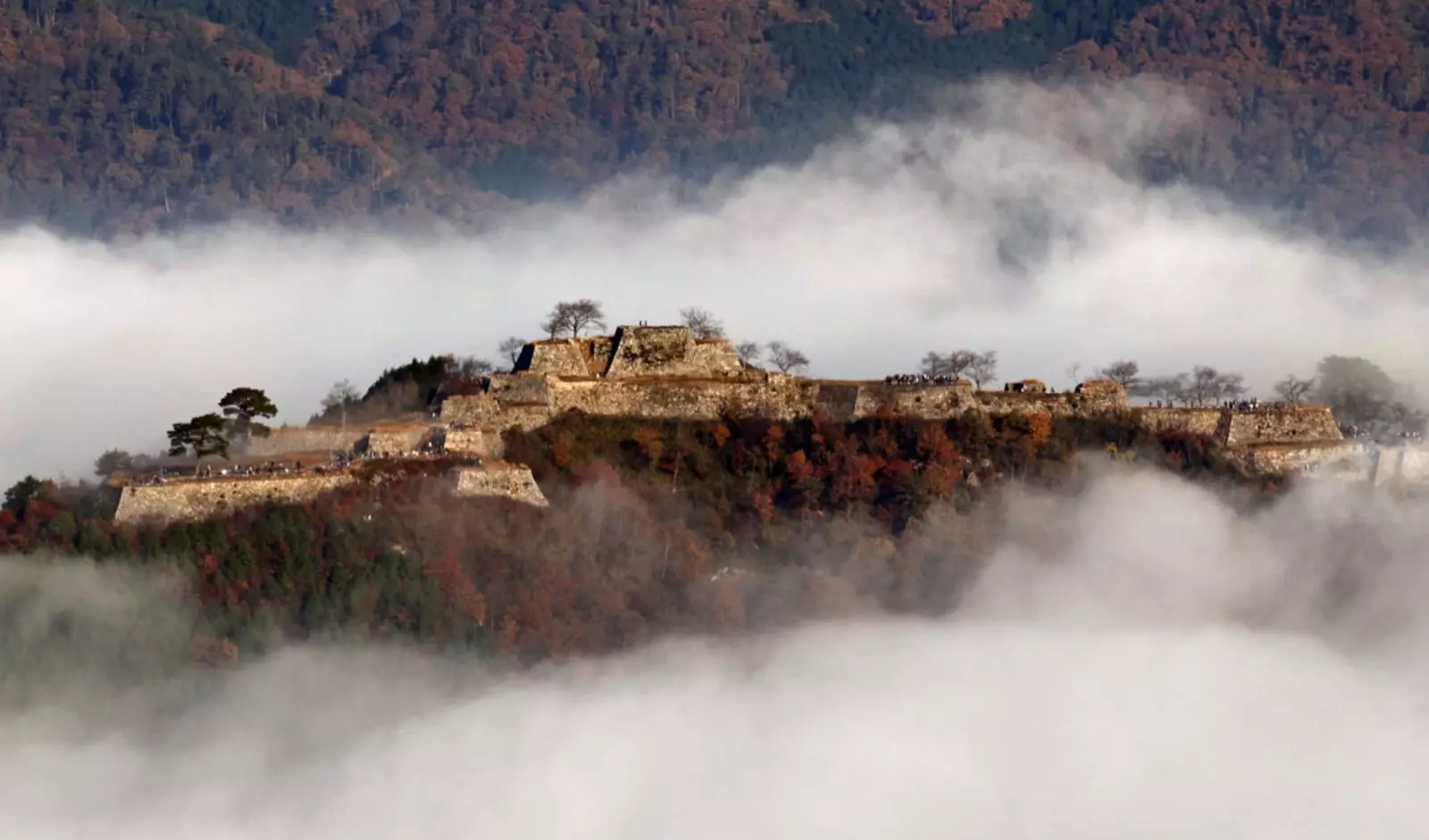
A journey back in time to some of the most beautiful fortresses in Asia
Asia is full of idyllic palace postcards. The 45 million square kilometers of jungles, deserts, steppes and plains that draw the landscapes of the continent have been the setting where some of the oldest civilizations on the planet and, consequently, the imposing architectural monuments that represent them.
Since great residences nestled in the mountains even fortresses that have seen the birth of great dynasties: there is no retina that can resist its ancient wonders. Although the passage of time has not allowed us to contemplate them in all their splendor, its ruins -so distant nowadays- allow us fantasize about what it would be like to visit them in their glory days.
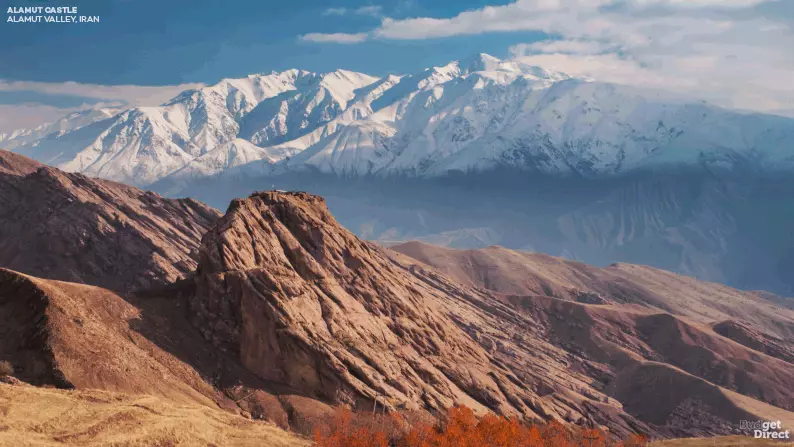
Alamut Castle
However, the Budget Direct team has wanted to cross the borders of the imagination and has rebuilt (digitally) six ruined castles. To do this, they have carried out in-depth documentary work, as well as being supervised by a team of architects and with the management of NeoMam Studios.
These are the six realistic animations that Budget Direct has painstakingly crafted and that, without a doubt, they activate the wanderlust spirit:
ALAMUT CASTLE (ALAMUT VALLEY, IRAN)
The governor Vahsudan was inspired by an eagle perched on a high rock to build Alamut in the ninth century, currently in ruins. Endless legends surround the castle: one of the most famous dates back to 1090, when Hassan-i Sabbāh conquered it as part of his rebellion against the Seljuks.
He also known as Old Man of the Mountain , reportedly, first he converted the nearby village of Qazvin to Ismailism. In this way, the inhabitants of Qazvin staffed the castle and Hassan was able to overthrow his ruler without violence.
On the other hand, it is said that personalities of the stature of Marco Polo mentioned in their day Alamut and his secret chamber in the garden , which well resembled paradise.
Whether this is true or not, its huge library, destroyed by the Mongols in 1256 , was one of the reasons why this fortress was on everyone's lips. The end of this relic was the result of the various assaults in search of the hidden treasure in its entrails.
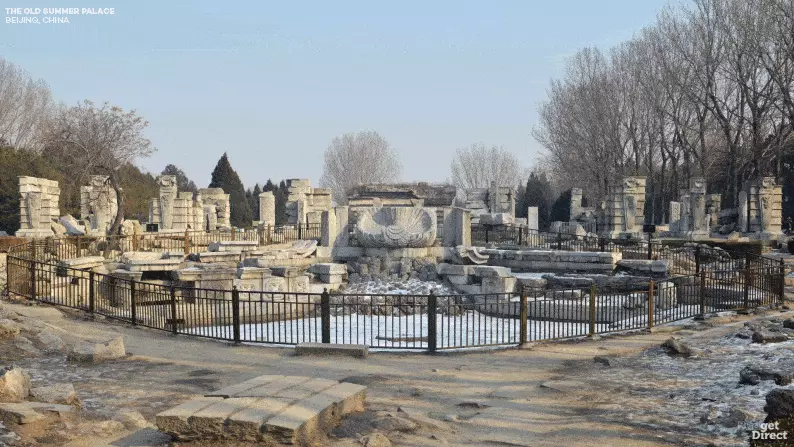
Beijing Summer Palace
THE OLD SUMMER PALACE (BEIJING, CHINA)
Yuanming Yuan It was built in 1707, under the orders of the Kangxi Emperor. The complex, which had more than three square kilometers of palaces, lakes, gardens, towers and sculptures , was looted and destroyed by British and French troops during the Second Opium War.
After numerous conflicts that broke out in the city, **the complex was destroyed, **remaining only a few buildings on the outskirts.
The Old Summer Palace once housed architecture, works of art and cultural objects what do they say Chinese history: from 3,000-year-old bronze ceremonial vessels to replicas of landscapes of the south of the country.
The recreated building has been the Haiyantang (Palace of Calm Seas), designed by the Jesuit missionary Giuseppe Castiglione. In front of the palace, a hypnotic clepsydra was surrounded by 12 Chinese zodiac animals.
HAGI CASTLE (HAGI, JAPAN)
The samurai clan mori he supported the wrong side in the battle of Sekigahara and lost much of his land as a result. the triumphant Tokugawa Shogunate granted the Mōri permission to build a new castle in the small Hagi seaside town , where he rose in 1604.
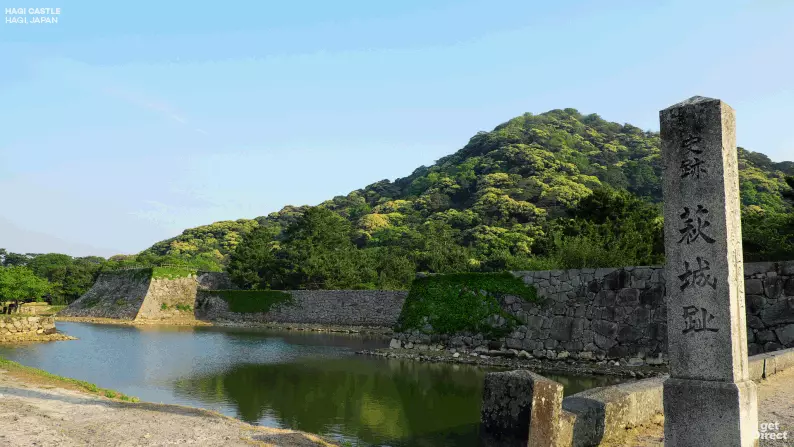
hagi castle
The castle became Chōshū domain capital, playing a decisive role during the Meiji Restoration. In 1874 it was dismantled by the new government as part of a policy of centralization and modernization.
Although we can still see bastions and walls that protect the surrounding terrain, of the palace, built at the base of Mount Shizukiyama , only its stone base and part of its moat remain.
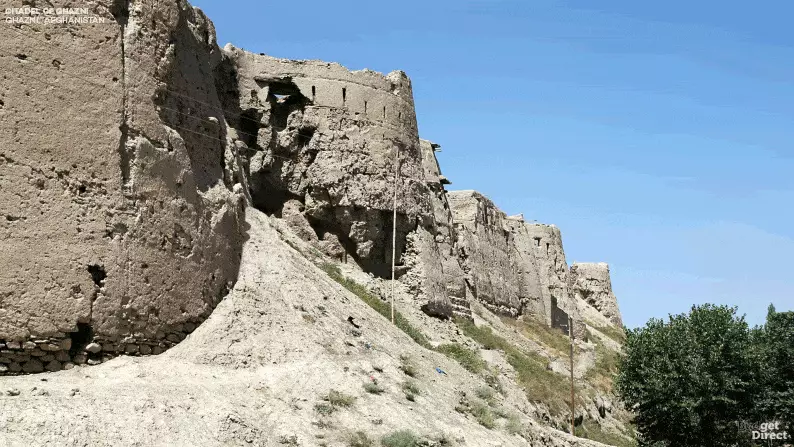
Ghazni Citadel
GHAZNI CITADEL (GHAZNI, AFGHANISTAN)
Although the current fortress dates from the thirteenth century , Ghazni entered the scene much earlier. Along the centuries, Ghazni has been arrested by a long list of important conquerors in history, such as the Mongols, Timur (Tamerlane) and the Mughals.
The conquest of the citadel by the british in 1839 was decisive in putting an end to the first Anglo-Afghan war, and it was not the only time that this enclave has acted as military strategic point.
Nowadays, Ghazni is the only remaining walled city in Afghanistan and an important economic center. The walls,** the towers -14 of the 32 have already been lost-** and the citadel are at risk of being lost due to the traces of time.
RAIGAD FORT (RAIGAD, INDIA)
This castle, whose foundations date back to the year 1030, was conquered in 1656 by then Zamindar Shivaji Maharaj. Shivaji renovated and expanded the already impressive fortifications, making them his capital.
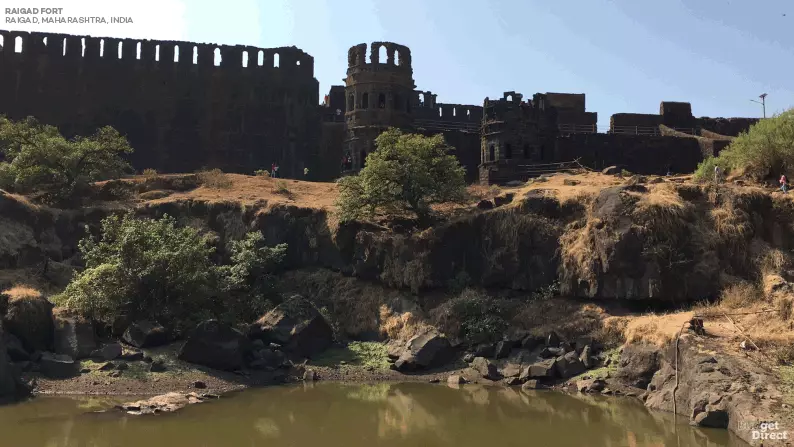
Raigad Fort
In 1674 he was crowned chhatrapati and founded the Maratha Confederation. The British East India Company destroyed Raigad in 1818, and the ruins have not yet been fully mapped by the Indian government.
To reach the main entrance of the castle, located at 820 meters above sea level, you had to upload nothing more and nothing less than 1,737 steps - currently, there is an aerial tramway. Whoever visits this fascinating place can still see the remains of two of the three watchtowers and the famous Hirakani Buruj wall.
Various reservoirs, stone stalls for merchants and an open ground for Holi celebration they complete the enclosure where the pillars of the old palace rest.
TAKEDA CASTLE (ASAGO, JAPAN)
Between a sea of clouds the Takeda Castle, built in 1441 by Otagaki Mitsukage , a servant of Yamana Sōzen, lord of the area. Otagaki became the owner of it until was conquered in 1577 by Hideyoshi Toyotomi , during the Tajima Province campaign.
Akamatsu Hirohide, the last lord of the castle , fought on the side of Tokugawa Ieyasu on the battle of sekigahara , That had place in 1600. When Hirohide was accused of arson, he underwent seppuku and the castle was abandoned.
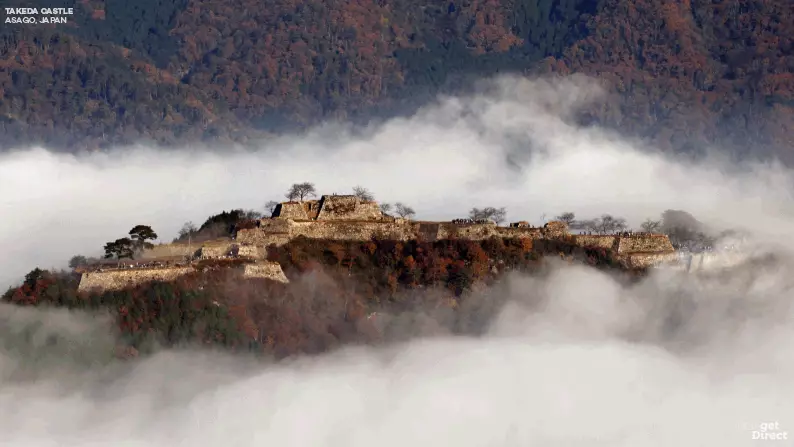
Takeda Castle
Although the main buildings of the castle are no longer standing, the stone walls of the castle have been restored and well preserved. On the other hand, at the base of the mountain, near Takeda station , there is a series of ancient temples associated with this spectacular fortress.
